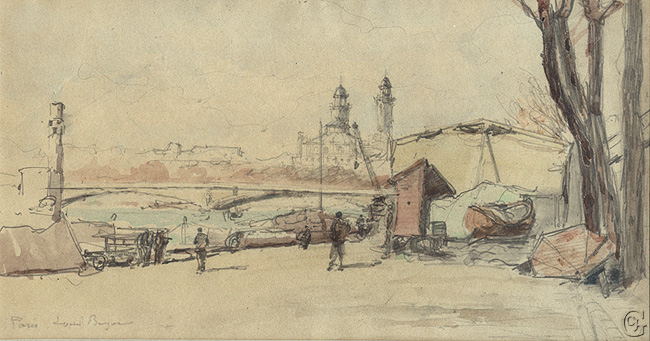Affordable Drawings
from the 16th through the 20th century
from the 16th through the 20th century
- Vasari, Seven Bishop Saints
- Passarotti, Male Nude Study
- Castello, A Decapitation
- Wildens, A Hilly Path
- Florentine School , Floral Ornament
- Procaccini, Head of a Soldier
- French School, Head of Hercules
- Vlieger , Fishermen
- Gargiulo , Elevation of Saints
- Roos, Cattle and Sheep
- Cabel, River Landscape
- d'Onofri , Trees in a Landscape
- German School, The Coronation of the Virgin
- Heemskerck, Peasants Drinking
- Piola, St. Raymond
- Moucheron , Classical Figures in a Grove of Trees
- Chaufourrier, Solfatara
- Lantara , Storm over a Village
- Volaire , Neapolitan Boatman
- Monogramist Vh , Woodland Grove
- Bolognese School, Seated Warrior
- Galliari , Stage Set: Courtyard of a Farm
- Duclaux , Plants Growing in a Field
- Cruikshank , Standing Male
- Altmann , Wine Taster
- Decamps, Trees at the Villa
- Nanteuil , Two Figures
- Bodmer, Partridges
- Harpignies , Trees
- Marsaud, Harlequin
- Dehodencq, Three Sketches
- Delauney, Fruit Tree with Birds
- Dansaert , Brawl in a Tavern
- Chapu, Studies for ’’Une Source’’
- Vannutelli, Two Women Seated in a Church
- Lepère, Studies of Ladies Shopping
- Béjot, Pont de l'Alma
- Henricus, Japonisme
- Vuillard, Mme. Vuillard, Sewing at Her Window
- Couturier, Carnival Scene at Night
- Brockhurst, Chinese Group
- Stankavich, On the Frontier
| 37. Eugène Béjot (1867-1931) The Pont de l'Alma and the Trocadero from the Quai |
(click on image to print)

The Pont de l'Alma and the Trocadero from the Quai
Watercolor over pencil, Ca. 1929, 152 x 284 mm.
Rapid but detailed pencil drawing, finished in watercolor, on brownish wove paper with framing lines, signed in pencil and inscribed "Paris." Though not a preliminary drawing for it, and, for that matter, taken from a point closer to the architectural subject, the view
and composition are similar to Bejot's etching of 1929 (Laran 403). The two towers and rotunda of the Trocadero (torn down in 1936) are shown towering over the bridge, and the quai in the foreground is filled with industrial sheds, tents, wagons and workers. Béjot was a prodigious and popular etcher but his best works are probably his watercolors.
![]()